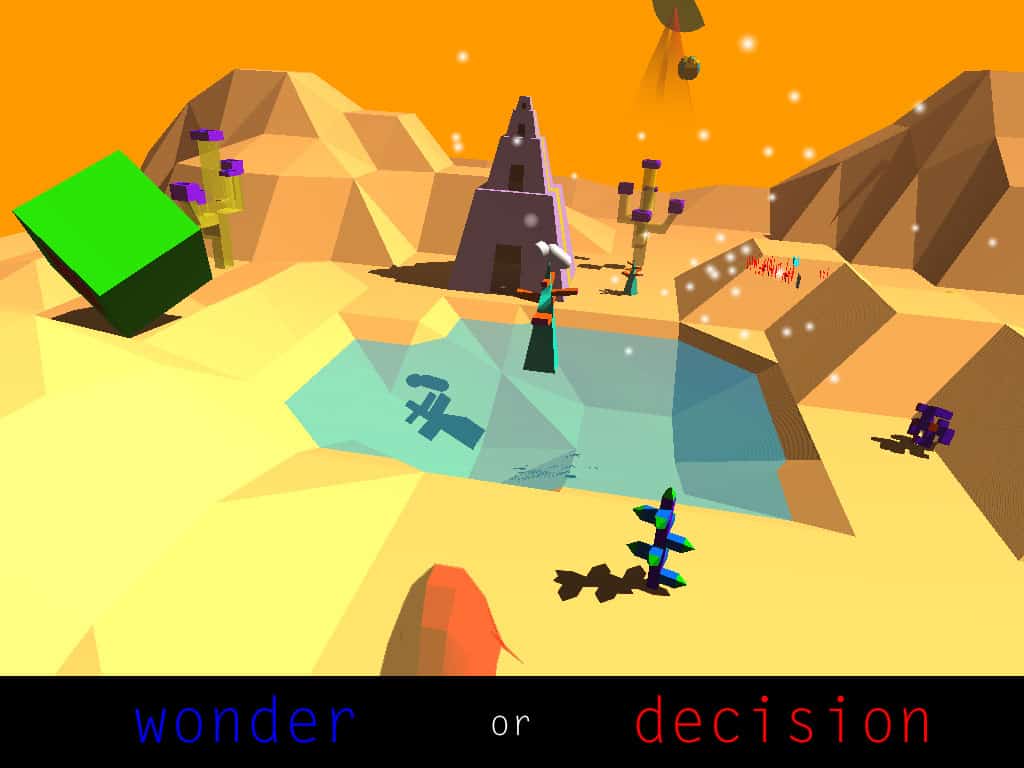Submitted by: Berkley Staite, Imaginary Architects Artist
This post is Part 2 in a series. Read Part 1 here
Digital game design is always a curious process for me: whether I begin with an idea of a certain sort of interaction, or some objective of what I’d like to accomplish with the end product, it’s almost certain to change considerably over the process of developing it.
One of the biggest reasons behind this lies in the nature of digital software: to achieve the results I’m looking for, I have to very explicitly tell a computer what to do in the form of code. I’m by no means an expert programmer, so this very often leads to a bit of a back-and-forth experimentation, negotiating the interaction between what a computer will respond to and the tools I have access to by which to give it these instructions. Almost invariably this translation process will result in some unexpected discoveries — something omitted in my code might lead to an entirely different interpretation by the computer — and occasionally these discoveries open up entirely new directions for the game.
Additionally, many ideas that sound good in concept just don’t play out as envisioned once they’re implemented. I’m reminded again and again (through my own frequent missteps) of the absolute necessity of starting out trying to make a “minimum viable product” – a proof of concept that can then be expanded upon only once the core ideas have been evaluated in a practical way. Too often I stumble into the pitfall of trusting that things will come together at the end and cohere into the something greater that I’ve had in mind all along, and every time I have to make compromises when things don’t line up quite as envisioned.
And so it’s been with Category Shift! Though the core concept has survived my working process, the details of its implementation have wandered far abroad. Some elements I’d envisioned proved technically more difficult than I’d anticipated while others I’d never even conceived of almost dropped themselves in my lap. The end result represents a negotiation shaped by three things: my present understanding of programming, what I’m absolutely committed to including and where I’ll yield to compromise, and the time constraints involved. Change any one of those three and you might end up with an entirely different product. And with that comes a beautiful potential inherent in digital design: I can! Perhaps Category Shift will continue to evolve or perhaps I’ll just take elements of it into future projects. For the time being, though, it stands as a marker of this present convergence. What’s come before will continue to shape what yet will arise…
Imaginary Architects, curated by Stephanie Canning, SCC Exhibitions & Education Coordinator, explores how contemporary Fine Craft artists incorporate notions of play into their work through imaginative, handmade toys and games. A variety of mediums are featured including: fibre, wood, printmaking, ceramics, paper making, digital media and more. Fun for all ages, there are opportunities for interactive play.
Imaginary Architects is at the Affinity Gallery, 813 Broadway Ave, from December 5, 2014-January 10, 2015